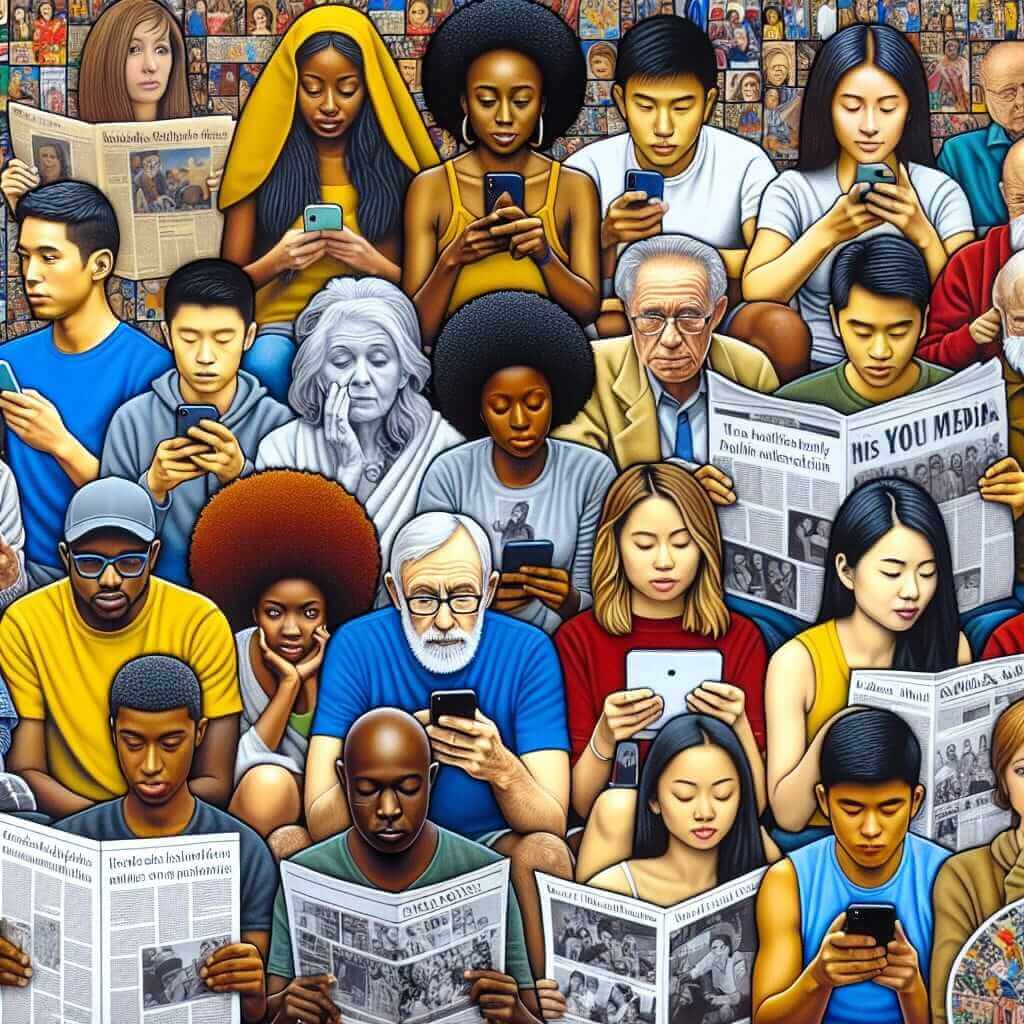The pervasive influence of mass media on cultural identity is an increasingly relevant topic in the IELTS Writing Task 2 exam. This essay will delve into this complex issue, providing insights, sample answers, and key vocabulary to help you excel in your IELTS preparation. We will analyze a sample question, dissect its nuances, and craft a high-scoring response.
Table Of Contents
Sample IELTS Writing Task 2 Questions
Here are a few examples of how this topic might appear in your IELTS exam:
- To what extent do you agree that the increasing availability and accessibility of mass media have had a negative impact on cultural identity?
- Some people believe that mass media like television and the internet have a largely beneficial impact on cultural identity. Others believe the impact is detrimental. Discuss both views and give your own opinion.
- Mass media is often blamed for the erosion of traditional cultures. How true is this statement? What measures can be taken to preserve cultural diversity in the face of globalization and the dominance of mass media?
Sample Answer and Analysis
Let’s choose the first question for our sample answer:
To what extent do you agree that the increasing availability and accessibility of mass media have had a negative impact on cultural identity?
Analysis
This question requires you to present a balanced argument, acknowledging both positive and negative influences of mass media on cultural identity. You need to clearly state your opinion on the extent to which you agree or disagree with the statement and support your stance with relevant examples and analysis.
Model Essay
It is undeniable that mass media, encompassing television, internet, and social media, has become ubiquitous, fundamentally shaping how we perceive and interact with the world. While this widespread accessibility offers certain merits, I firmly believe its burgeoning influence has had a predominantly negative impact on cultural identity.
One of the most significant drawbacks of mass media is its tendency to homogenize cultures. With global media giants churning out content consumed by a vast, diverse audience, there is a risk of smaller, less dominant cultures being overshadowed or even assimilated. This constant exposure to foreign values, beliefs, and lifestyles can lead to the erosion of unique traditions, languages, and customs, ultimately blurring the lines between distinct cultural identities. For instance, the dominance of Western music, fashion, and entertainment in many parts of the world, facilitated by mass media, has led to a decline in the patronage and preservation of indigenous art forms.
Furthermore, mass media often perpetuates stereotypes and unrealistic representations, which can distort the perception of different cultures. This can lead to prejudice, discrimination, and a lack of understanding and appreciation for cultural diversity. For example, the portrayal of certain ethnicities or religious groups in a negative light by some media outlets can fuel existing biases and create social divisions.

However, it is important to acknowledge that mass media can also play a role in preserving and promoting cultural identity. Documentaries, films, and online platforms can showcase the richness and diversity of cultures worldwide, fostering intercultural dialogue and understanding. Social media, despite its drawbacks, can connect diaspora communities and help preserve languages and traditions across geographical boundaries.
In conclusion, while mass media can contribute to cultural awareness and exchange, its potential downsides cannot be disregarded. The homogenization of cultures, the perpetuation of stereotypes, and the erosion of local traditions far outweigh any perceived benefits. Therefore, it is imperative to approach mass media with a critical eye and to prioritize the preservation and celebration of our diverse cultural identities.
(Word count: 320 words)
Notes
- Structure: The essay follows a clear structure: introduction, body paragraphs presenting both sides of the argument, and a conclusion.
- Vocabulary: The essay uses a range of vocabulary related to the topic, such as “ubiquitous,” “homogenize,” “assimilated,” “perpetuates stereotypes,” and “cultural diversity.”
- Grammar and Coherence: The essay demonstrates good grammatical accuracy and uses cohesive devices to connect ideas effectively.
Vocabulary
- Ubiquitous (adjective): Being or seeming to be everywhere at the same time /juːˈbɪk.wɪ.təs/
- Homogenize (verb): To make things or people become similar /həˈmɑː.dʒə.naɪz/
- Assimilate (verb): To become part of a group, country, society, etc., or to make someone or something become part of a group, country, society, etc. /əˈsɪm.ə.leɪt/
- Perpetuate (verb): To cause something to continue /pɚˈpetʃ.uː.eɪt/
- Stereotype (noun): A set idea that people have about what someone or something is like, especially an idea that is wrong /ˈster.i.ə.taɪp/
- Erosion (noun): The process by which something is gradually destroyed /ɪˈroʊ.ʒən/
- Indigenous (adjective): Naturally existing in a place or country rather than arriving from another place /ɪnˈdɪdʒ.ə.nəs/
- Diaspora (noun): A group of people who spread to other countries from their original country /daɪˈæs.pɚ.ə/
- Dominance (noun): A situation in which one person or group has more power or influence than any other /ˈdɑː.mə.nəns/
- Detrimental (adjective): Causing harm or damage /ˌdet.rəˈmen.t̬əl/
Conclusion
The effects of mass media on cultural identity are multifaceted and require nuanced discussion. By understanding the potential benefits and drawbacks, analyzing relevant examples, and using precise vocabulary, you can craft compelling responses to IELTS Writing Task 2 questions on this topic. Remember to practice regularly and familiarize yourself with different question formats to achieve your desired band score.